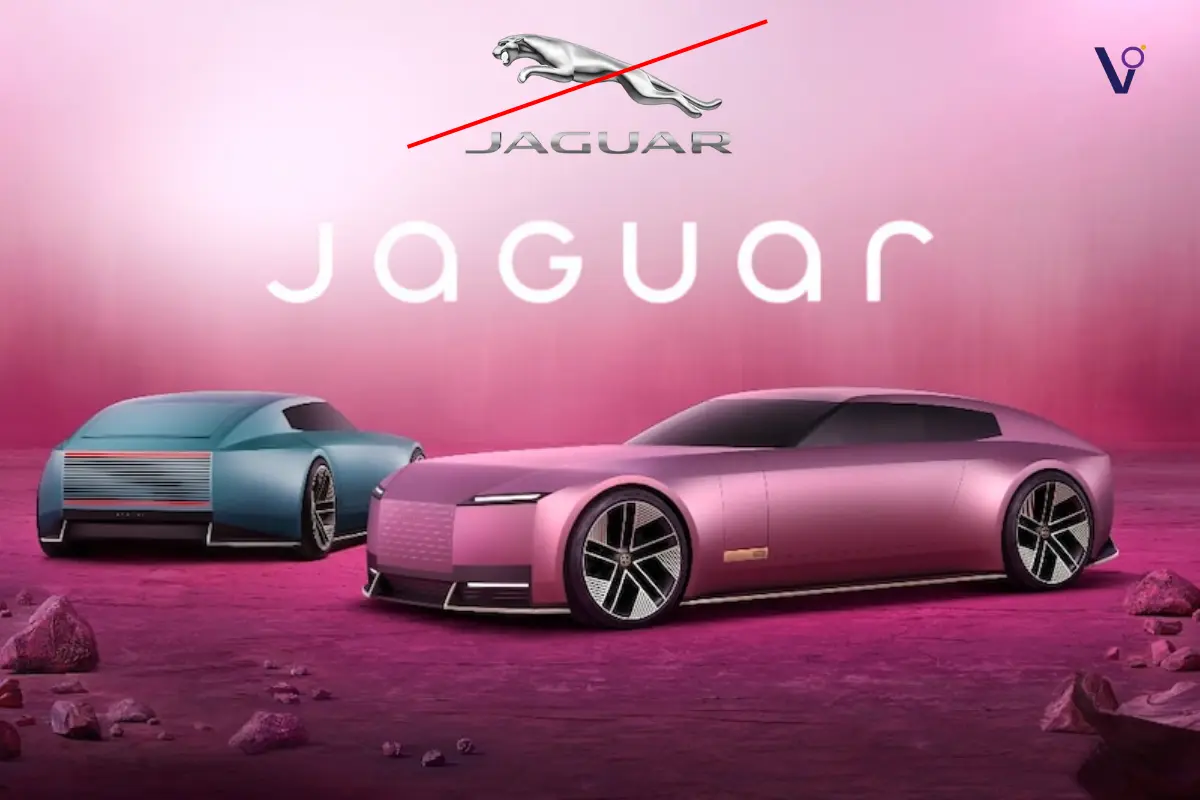A few years ago, Jaguar was considered a legacy brand in dire need of revival. While BMW and Mercedes-Benz dominated conversation, Jaguar just seemed like an afterthought in the luxury automobile market. Now, here is the interesting part of this story—now they are the only brand talked about over coffee, shared over social media, or just casually with friends and acquaintances. Everyone is curious about which cars they have designed after releasing Jaguar’s new logo and brand identity.
What changed? Jaguar did something bold. They didn’t just launch a new product; they rewrote their narrative. Their Instagram reel, now viral, is a testament to how smart branding and daring strategies can put a brand back in the spotlight.
What Did Jaguar Do?
- They Challenged the Status Quo
Jaguar stepped away from the sleek yet predictable luxury car narrative that competitors like Mercedes-Benz and BMW have perfected. Instead, they embraced a more provocative, even disruptive, approach. By doing this, they didn’t just cater to existing customers—they sparked intrigue among those who might have never considered them. - They Embraced Conversation—Good or Bad
Their campaign has stirred opinions across the board. Some praise their audacity, while others critique it. But Jaguar isn’t shying away from polarizing discussions. They understand that to stay relevant, a brand must be talked about—whether positively or negatively. - They Used Mystery to Create Buzz
Their messaging leaves viewers with questions, fueling curiosity. People are eager to see what their new launch will look like. This sense of mystery is a masterstroke because it ensures Jaguar stays on the audience’s radar until the big reveal. - They Made It About More Than Cars
Jaguar isn’t selling cars; they’re selling a mindset. Their campaign feeds into a much larger narrative of how to challenge perceptions, leave comfort zones, and redefine what a luxury brand could be.
Breaking Down Jaguar’s new logo and Brand Identity
At its core, Jaguar’s strategy was about contradiction and perception-breaking. Here’s what you can learn from their success:
- Challenge Existing Beliefs
People have preconceived notions about brands, products, and even individuals. Jaguar disrupted the idea that they were “just another legacy car brand.” Entrepreneurs like Alex Hormozi and Iman Gadzhi have done this too—proving that unconventional paths can lead to massive success. - Create an X-Factor
An X-factor is that unique trait or approach that makes you stand out. For Jaguar, it was daring to embrace controversy and conversation. For others, it could be a groundbreaking product, a bold design, or an unexpected marketing angle. - Be Bold, Even Polarizing
Playing it safe doesn’t make headlines. Jaguar leaned into a strategy where reactions—whether good or bad—worked in their favor by keeping their brand relevant. - Leverage Curiosity
Their campaign isn’t about answers; it’s about questions. What’s coming next? Why this bold move now? This makes the audience an active participant in the brand’s story.
The Takeaway for Your Business
If you want to grow your brand, ask yourself: How can I challenge perceptions? Whether it’s through a daring marketing campaign or redefining what your product stands for, stepping away from the norm creates opportunities.
Jaguar didn’t just sell cars; they sold curiosity, conversation, and a new identity. And now, they’ve reminded the world why they’re a brand worth watching.
Imagine a commercial for a luxury car brand, but there’s no car in sight. Instead, the star of the ad is… a chicken. Strange? Yes. Memorable? Absolutely. Over a decade ago, Mercedes-Benz released a commercial that redefined the art of subtlety in marketing. With over 29 million views today, the ad is still celebrated for its brilliance. It was so impactful that even Jaguar couldn’t resist responding, turning it into a witty battle of brands.
What do we learn from this epic marketing war? Let’s break it down.
Jaguar reveals their first model: Jaguar Type 00
Jaguar just launched their first model, the Type 00, which is minimalist but beautiful. Its color palette has a hint of Miami Pink and London Blue, inspired by references that are cultural icons—Art Deco architecture pastels from Miami and the iconic silver-blue of the Opalescent type found on Jaguar’s E-Type 1960s.
Noticeably, the car features a host of details such as an oval-shaped steering wheel, a wide slatted grille, and the absence of a rear window with camera-based visibility instead. The new interpretation of car design has all the potential to meet Jaguar’s “Copy Nothing” rebranding goals by challenging the usual norms of design and triggering very strong emotions.
The internet is abuzz over the new designs. Some find it exciting and a reflection of the future vision, while others feel it moves too far away from Jaguar’s classic elegance. People are divided on opinions about the Type 00 and the features it presents, such as camera-based rear visibility and striking colors. Some call it genius, while other critics say the design is being copied from Rolls Royce.
But, Jaguar has achieved what every brand’s vision board looks like: fame and attention. Love it or hate it, everyone’s watching.
Indirect Selling

Jaguar notably has a unique ability to avoid “showing hunger” for the audience’s attention or money. Neither begged the audience to buy their cars. Instead, they created intrigue and desire through:
- Storytelling: Do you remember the iconic Mercedes-Benz? Mercedes didn’t explain their Magic Body Control—they showed it through a chicken. Jaguar didn’t boast about being fierce—they turned the chicken into a lion.
- Metaphors: The chicken was the star, representing smoothness and innovation for Mercedes and raw power for Jaguar.
- Audience Engagement: Both brands encouraged the viewer to connect the dots, making their message more impactful.
Why Jaguar’s new logo and Rebranding are Genius
Fast forward to today, and Jaguar’s bold moves in marketing prove they’ve learned from their past battles. They know how to create conversation and controversy—just like they did during the chicken ad saga. The current buzz surrounding Jaguar isn’t an accident; it’s part of their calculated approach to challenge perceptions and stay in the spotlight.
When a brand goes out of its way to shake things up, they force the audience to notice them. Whether it’s curiosity, admiration, or even backlash, what matters is that people are talking. And Jaguar knows better than anyone that relevance is currency in marketing.
Jaguar aims to modernize its image, focusing on luxury and electrification to remain competitive in the evolving automobile market.
The new logo reflects sophistication, innovation, and Jaguar’s shift towards a more modern and luxurious identity.
Jaguar plans to become an all-electric brand by 2025, emphasizing sustainable luxury.
Jaguar plans to release its new lineup by 2025, emphasizing electric luxury vehicles.



